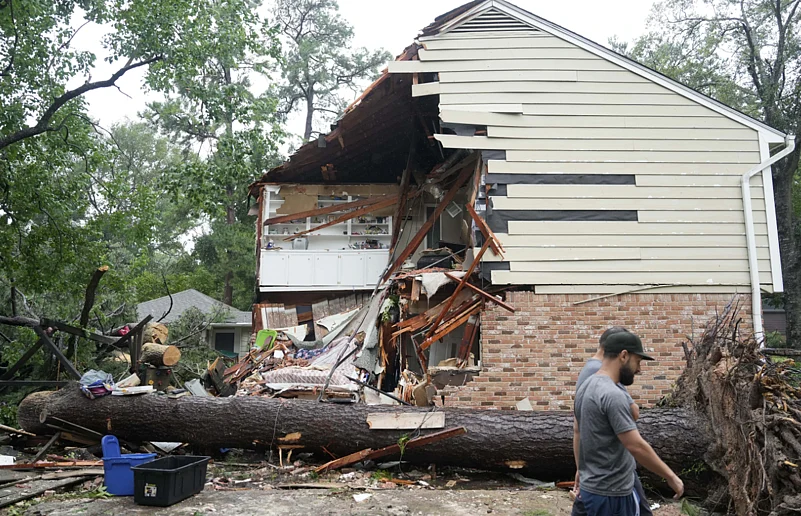Hurricane Beryl has left a trail of destruction across south-east Texas and Louisiana, claiming the lives of at least seven people. The storm initially hit as a category one hurricane but has now weakened to a tropical depression. Despite its reduced strength, its impact has been severe.
On Monday morning, Beryl brought destructive winds and heavy rain to the southern United States. The storm produced up to 15 inches (38cm) of rain and dangerous storm surges, leading officials to issue warnings about life-threatening conditions.
In Texas, more than 2.6 million homes were without power by Monday night, according to poweroutage.us. Louisiana also experienced significant power outages, affecting over 30,000 people. Houston's main airport saw over 1,100 flight cancellations, disrupting travel across the region.
Lives Lost in Texas
Tragically, the storm has claimed lives across multiple counties. In Texas, Harris and Montgomery counties reported seven fatalities. Among the victims was a 53-year-old man who died when winds downed power lines, causing a tree to fall on his home, collapsing the roof. In the same county, 73-year-old grandmother Maria Loredo was killed when a tree crashed through her roof. Loredo's family, including her son, daughter-in-law, and two young grandchildren, survived the incident.
A Houston Police Department employee, Russell Richardson, 54, drowned after attempting to drive through high water on his way to work. Additionally, a person died in a house fire believed to have been sparked by lightning. In Montgomery County, one man was killed when a tree fell on his tractor, and two homeless individuals died when a tree fell on their tent.
Houston, a low-lying coastal city, is particularly prone to flooding. The area experienced sustained winds of 75mph (120km/h) and wind gusts reaching 87mph as the storm struck. Beryl's impact was felt far and wide, with significant damage to infrastructure and property.
As the storm continues to move northward, concerns remain high for flash flooding and further rainfall. The National Weather Service (NWS) has warned of potential tornadoes in Texas, Louisiana, and Arkansas. On Tuesday, the risk of tornadoes is expected to shift to Missouri, Tennessee, Kentucky, Illinois, Indiana, and Ohio.
More than 2,500 emergency responders, including members of the Texas National Guard, have been deployed to aid in recovery efforts. Ports in Corpus Christi, Houston, Galveston, Freeport, and Texas City have been closed as a precaution.
Beryl's Path and Future Impact
Beryl is expected to move east across America's central states, including Mississippi, later in the week. The storm will likely skip central and west Texas, areas currently experiencing moderate to severe drought.
At its peak, Beryl became the earliest category five hurricane ever recorded. The storm had a devastating impact on the Caribbean, especially in St. Vincent and the Grenadines, Mayreau, Union, and Grenada. Jamaica also experienced significant damage, and tourist hotspots in southern Mexico, such as Cancún and Tulum, were hit by heavy rain.
Experts suggest that exceptionally high sea surface temperatures may have contributed to Hurricane Beryl's power. While it is difficult to attribute specific storms to climate change, the increasing frequency and intensity of such events raise concerns. The US National Oceanic and Atmospheric Administration has warned that the North Atlantic could see up to seven major hurricanes this year, up from an average of three per season.




























